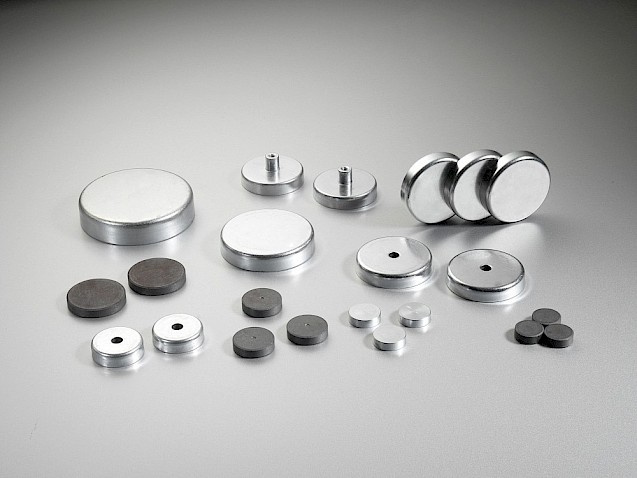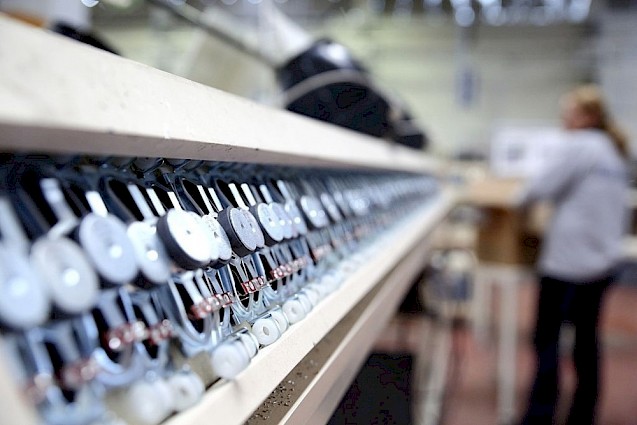Ferrite (Ceramic) Disc Magnets
Ideal for mounting and holding appliactions

Ferrite Magnets are corrosion resistant - they can be used in water with no corrosion at all. Although not as powerful as Neodymium Rare Earth, their high coercivity and relative low cost make them ideal for use in motors and high temperature motors.
Advantages
Disadvantages

Example: A company was using NdFeB Neodymium magnets to clamp onto hot mild steel surface - the magnets were struggling to perform and cost was an issue. We supplied Ferrite pot magnets, which not only provided sufficient direct pull force, but the pot magnets could handle the high temperatures, the magnets could not be damaged by being protected by the pot magnet design and the system was also cheaper and easy to maintain.